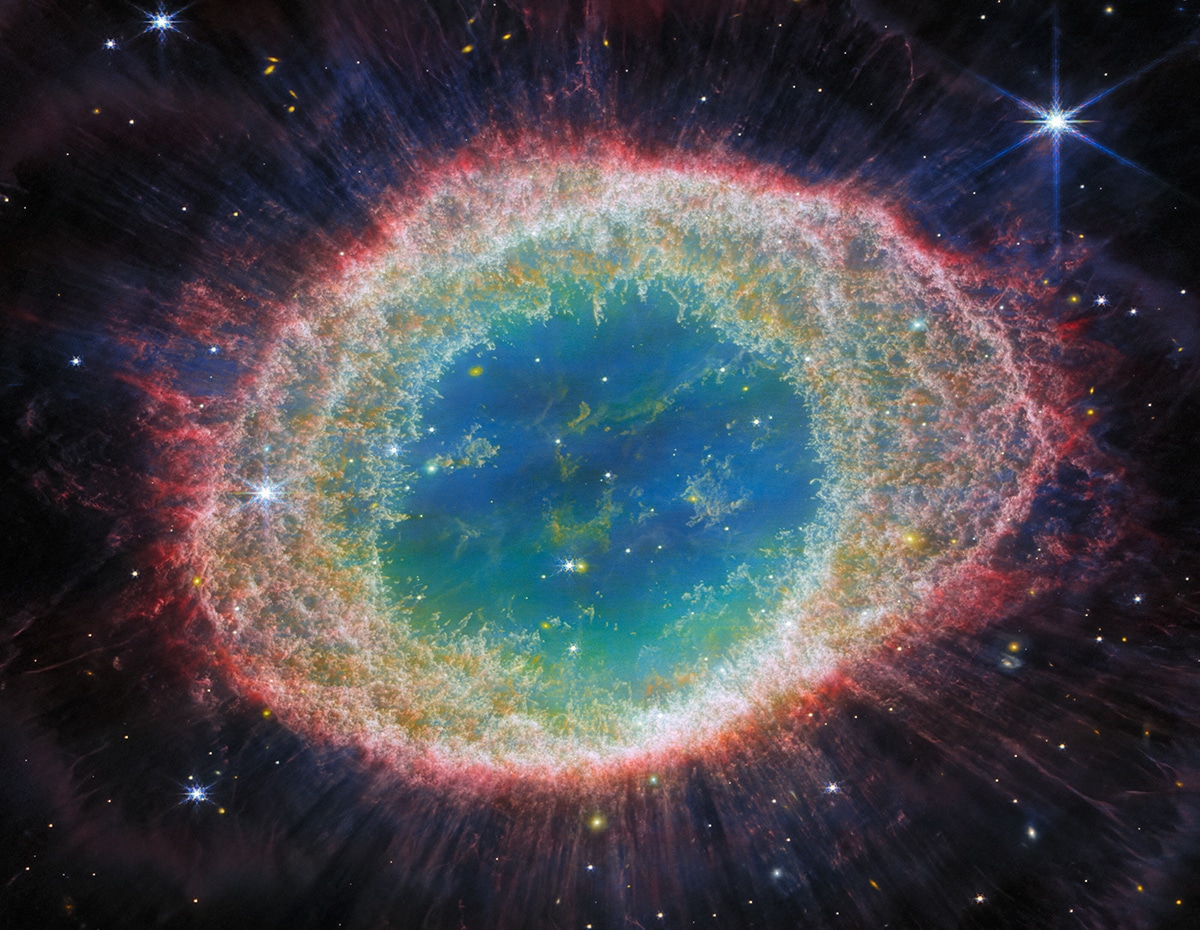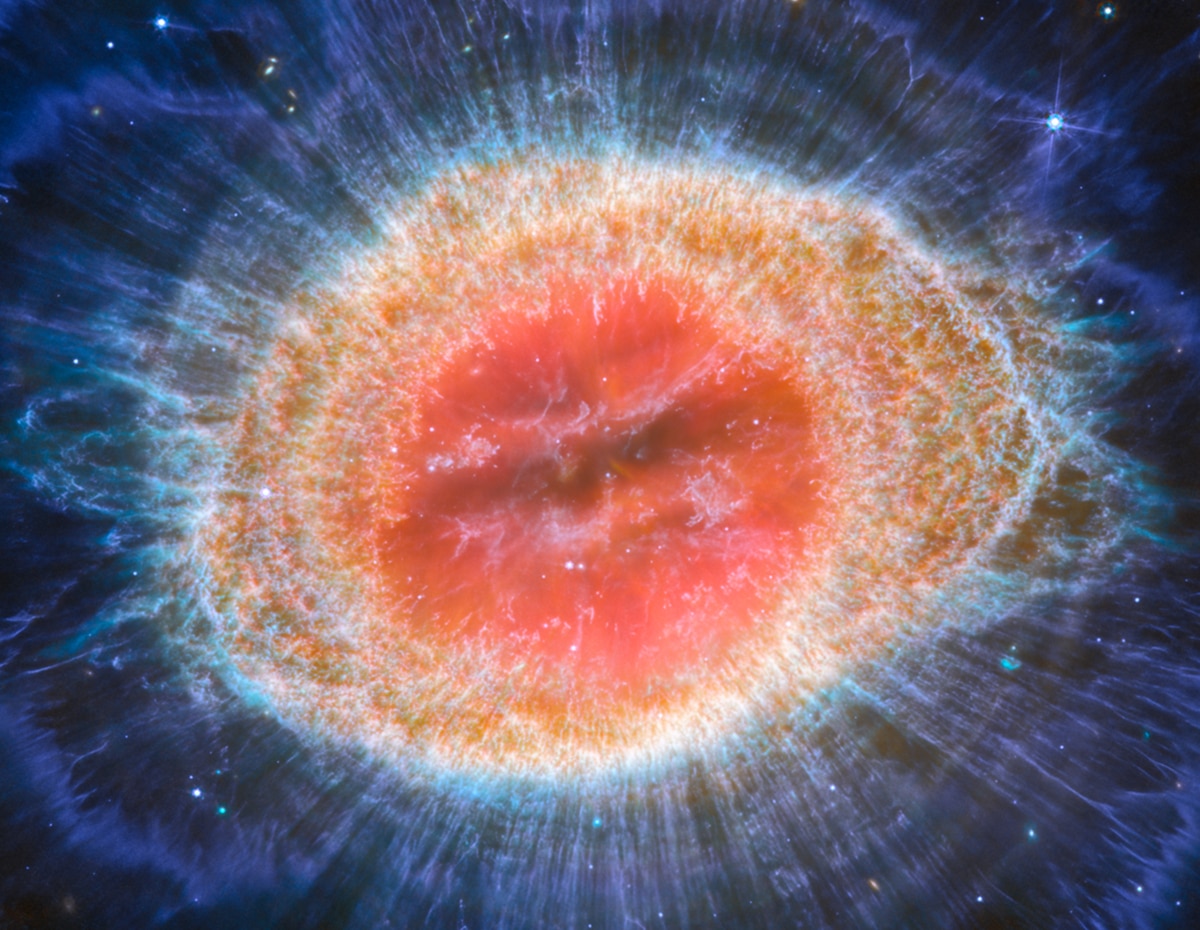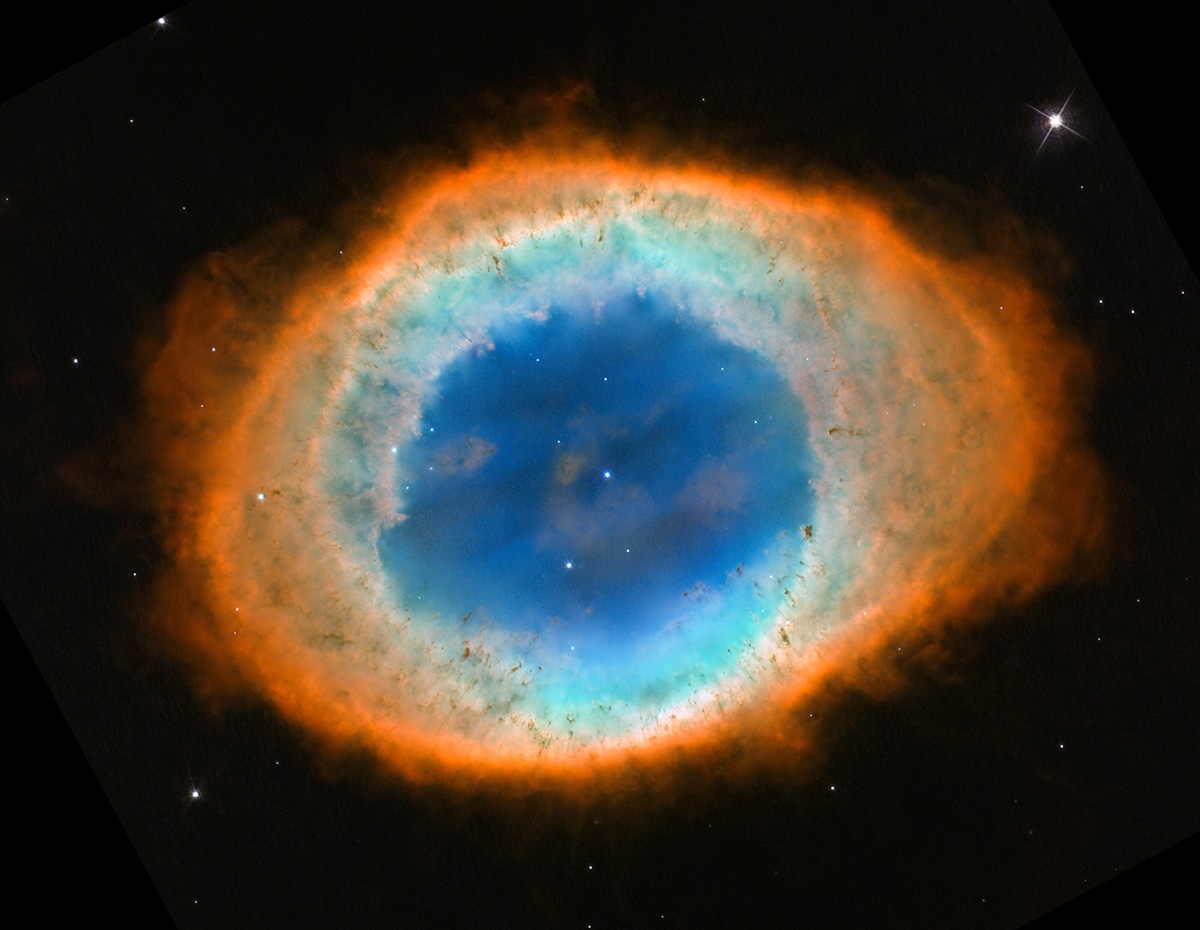The James Webb Space Telescope imaged the Ring Nebula as never seen before.
Here captured with the NIRCam (Near-Infrared Camera).
Since launching into space inDecember of 2021, the telescope has sent stunning images to Earth.

The James Webb Space Telescope imaged the Ring Nebula as never seen before. Here captured with the NIRCam (Near-Infrared Camera). (Photo:ESA/Webb, NASA, CSA, M. Barlow, N. Cox, R. Wesson)
In fact, the telescope returned two versions of its new image.
In the photos, the twisty filament structure of the inner ring is exposed, looking almost like clouds.
Twenty thousand dense globules within the ring hold molecular hydrogen.

The Webb Telescope’s MIRI image. (Photo:ESA/Webb, NASA, CSA, M. Barlow, N. Cox, R. Wesson)
The ring itself is made of ten or more arcs.
There is also a thin ring of polycyclic aromatic hydrocarbons (PAHs).
Inside the ring is hot gas.

The Ring Nebula as seen by the Hubble Space Telescope in 2013. (Photo:NASA, ESA, and C. Robert O’Dell (Vanderbilt University))
They were named for their fuzzy, planet-like appearance through small telescopes.
Modern observations, though, show that most planetary nebulae display breathtaking complexity.
It begs the question: How does a spherical star create such intricate and delicate non-spherical structures?
Binoculars and amateur telescopes can easily see it.
While the MIRI image shows the molecular halo, the NIRCam gives sensational internal detail.
These two images far outstrip the 2013 version by the Hubble Telescope, which predated Webb.
The advances are so clear that it would be easy to forgethow revolutionary Hubble was.
Yet the leaps and bounds of space exploration continue, with more discoveries around the corner each year.
The Webb Telescope’s MIRI image.
The Ring Nebula as seen by the Hubble Space Telescope in 2013.